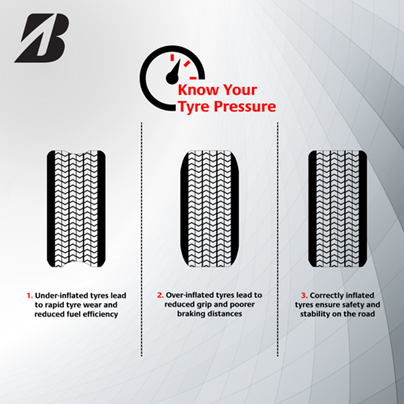How Tyre Pressure Impacts Fuel

Many factors can influence your vehicle's fuel efficiency, including driving habits, engine performance, and road conditions. Yet, one of the most overlooked—but highly impactful factor is tyre pressure. Here’s how maintaining the right tyre pressure can help you save fuel.
Tyre Pressure and Fuel Consumption
Adequate tyre inflation plays an important role in fuel efficiency. Properly inflated and aligned tyres can noticeably reduce your vehicle's fuel consumption. According to a US study, the right tyre pressure can improve your fuel efficiency by up to 3%. Here’s how:
Tyre Wear and Tear
Incorrect air pressure causes tyres to wear out unevenly and more quickly. This not only reduces their lifespan but can also affect your vehicle’s handling and stability. Misaligned or worn-out tyres can create drag, which causes rolling resistance, further reducing fuel efficiency.
Rolling Resistance
Tyre pressure directly affects rolling resistance (the force that resists the tyre’s motion as it rolls). Well-inflated tyres have lower rolling resistance, allowing your vehicle to glide more efficiently and use less fuel.
When your tyres are underinflated, they have a larger contact patch with the road. This creates more friction and requires your vehicle’s engine to work harder, increasing rolling resistance.
Overinflated tyres, on the other hand, may slightly improve fuel efficiency by reducing rolling resistance, but they offer a harsher ride, wear out unevenly especially in the tread centre, and reduce traction. All these can affect your vehicle handling and safety.
Durability & Longevity of Bridgestone Tyres
We understand the intricate balance between tyre pressure and fuel efficiency.
Bridgestone tyres are engineered for durability and long-lasting performance. This means they maintain their optimal shape and pressure for longer periods, helping to ensure that fuel efficiency remains high throughout the tyre’s lifespan.
Tips to Maintain Optimal Tyre Pressure
Here are a few ways you can make sure your tyres have sufficient pressure.
Do regular checks
Check your tyre pressure PSI at least once a month and before long trips. For the most accurate reading, check in the early morning before you start your journey or after the car has been parked for at least three hours. Driving heats the tyres, causing the air inside to expand and temporarily increasing the pressure, which can result in a falsely high reading.
Learn how to check your vehicle’s tyre pressure.
Get periodical inspections
Have your tyres occasionally inspected by a professional. Doing this ensures your tyres are in good condition, as they may identify issues that you might have missed.
Tyre pressure is a fundamental factor in fuel efficiency, and proper tyre inflation can lead to significant savings on petrol and diesel. Make sure your vehicle’s tyres have the recommended air pressure so that you can save on fuel consumption.
Head to our tyre catalogue for the complete list of Bridgestone tyres.